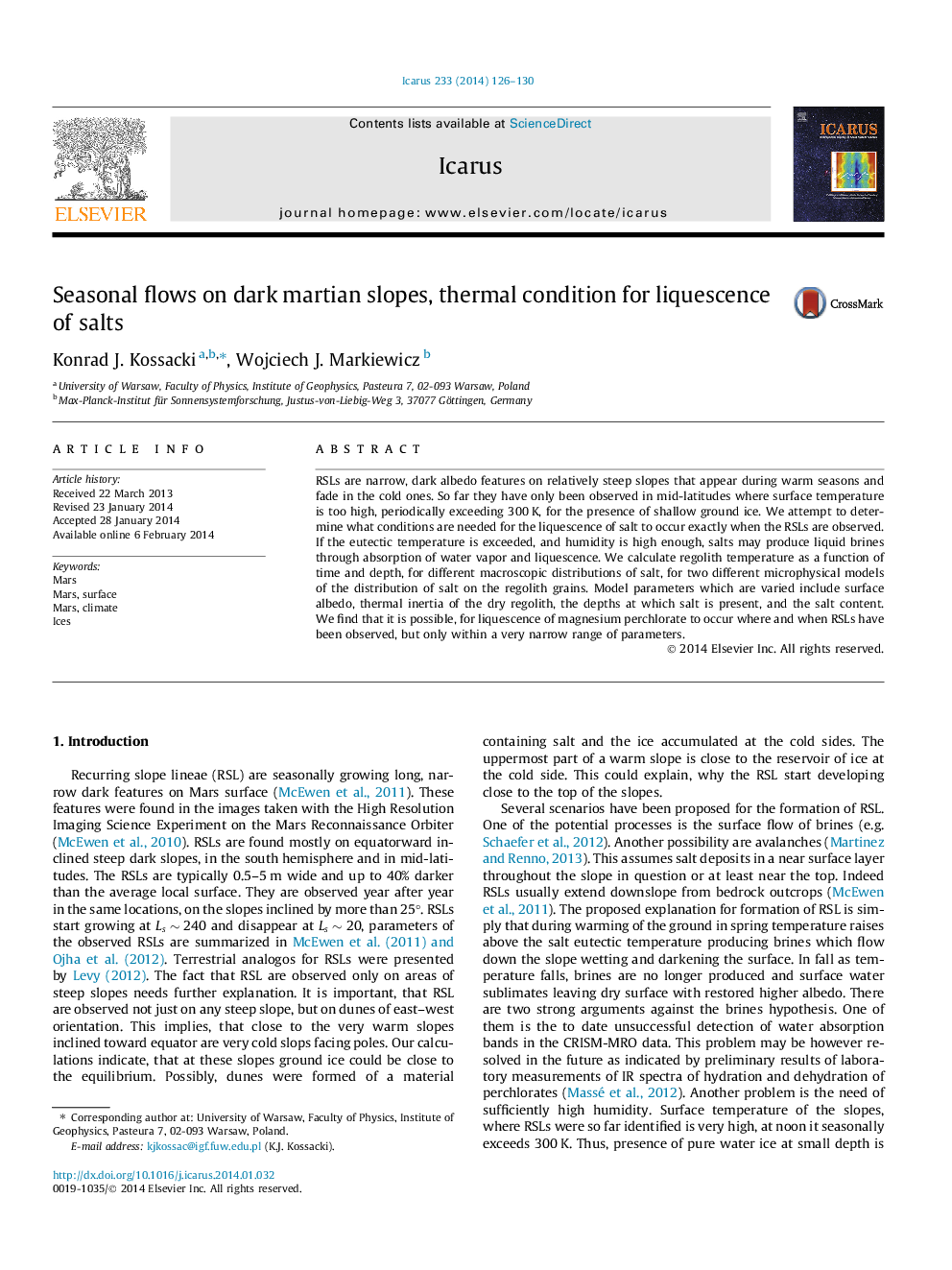| Article ID | Journal | Published Year | Pages | File Type |
|---|---|---|---|---|
| 8138309 | Icarus | 2014 | 5 Pages |
Abstract
RSLs are narrow, dark albedo features on relatively steep slopes that appear during warm seasons and fade in the cold ones. So far they have only been observed in mid-latitudes where surface temperature is too high, periodically exceeding 300Â K, for the presence of shallow ground ice. We attempt to determine what conditions are needed for the liquescence of salt to occur exactly when the RSLs are observed. If the eutectic temperature is exceeded, and humidity is high enough, salts may produce liquid brines through absorption of water vapor and liquescence. We calculate regolith temperature as a function of time and depth, for different macroscopic distributions of salt, for two different microphysical models of the distribution of salt on the regolith grains. Model parameters which are varied include surface albedo, thermal inertia of the dry regolith, the depths at which salt is present, and the salt content. We find that it is possible, for liquescence of magnesium perchlorate to occur where and when RSLs have been observed, but only within a very narrow range of parameters.
Keywords
Related Topics
Physical Sciences and Engineering
Earth and Planetary Sciences
Space and Planetary Science
Authors
Konrad J. Kossacki, Wojciech J. Markiewicz,
